#cetorhinidae
Text
Academy - Beautiful MILF lesbians trib and finger pussy before one fucks the other with a strap on
Loira gostosa chupando e dando pra dotado na cam
Mature Milf moaning in Pain
Bi studs assfucking in mmf threesome
Real virgin teen and redhead machine first time Family Makes Me Feel
cogida al vecino en el sillon de su casa
Bridgette B big cock fucking
WhiteGhetto Amateur Teen Calls Him Daddy as he Drills Her
Anal Rica trans mi puta
Shortest School Girl Skirts Ever Twister Teens Party at Home
#paypal#Lithea#Chloridella#undisfranchised#mermaidkin#unwakefully#REN#Calverton#plethoric#Libertytown#Cetorhinidae#matildas#biosphere#blacktwitter#heapy#mouthingly#ATMS#Alfirk#stony-hearted#trito-
0 notes
Text
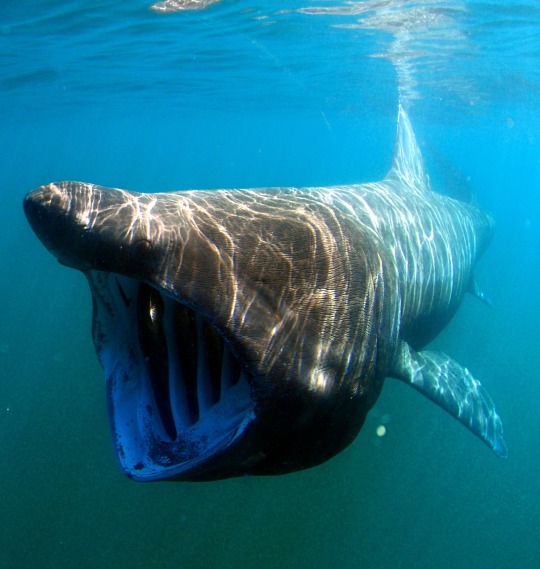
#poll#Class: Chondrichthyes#Order: Lamniformes#Family: Cetorhinidae#Genus: Cetorhinus#Cetorhinus Maximus
48 notes
·
View notes
Photo
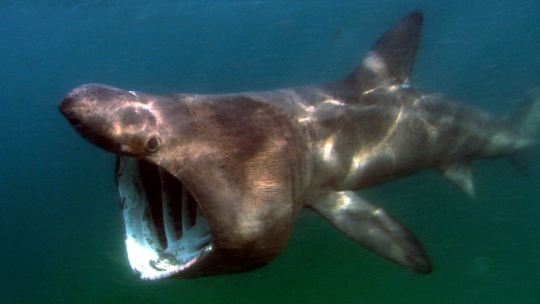
Basking Shark (Cetorhinus maximus)
Family: Cetorhinidae (Basking Shark Family)
IUCN Conservation Status: Endangered
Found mainly in temperate oceans worldwide, the Basking Shark is the second largest fish in the world, growing to an average length of 7-8 meters (although unusually large individuals may reach lengths of up to 11 meters, which is comparable to the world’s largest fish, the Whale Shark.) Like most of the world’s largest fish, it is a plankton eating filter feeder - when feeding it swims through the water with its enormous mouth (over 91cm in width) open and as water enters its mouth and runs through its gills a series of comb-like structures known as gill rakers filter planktonic organism out of the water (the shark then closes its mouth, at least once every minute, to swallow the plankton it has caught.) Basking Sharks migrate seasonally to reflect the abundance of plankton, which varies in accordance with access to sunlight: they spend most of the year in the open ocean, but during the spring and summer they travel into coastal shallows where the seasonally high concentration of plankton sustains them during their mating season (breeding in the shallows is preferable as shallow waters will be safer for their young, known as pups.) As is true of most sharks little is known about the courtship of Basking Sharks, but as female Basking Sharks are often seen leaping out of the water during the mating season it is thought that females who are receptive to mating may use the waves they produce as they splash down into the water to notify males of their presence. The enormous size of the Basking Shark often panics those that encounter them, but even among sharks (a group of animals who’s ferocity is often exaggerated) this species is docile, slow-moving and completely harmless - even if a human were to deliberately swim into a Basking Shark’s mouth they would not be swallowed, as the throat of a Basking Shark is only 2.5cm in width. Unfortunately, the Basking Shark’s enormous size, slow swimming speed and lack of a fear of humans makes it an easy target for fishers - it is commonly caught for its meat, skin, fins, liver oil and cartilage, and this combined with other threats such as entanglement in trawling nets and collisions with boats has resulted in considerable and ongoing declines in Basking Shark populations. That being said, there are promising signs that suggest that international approaches to Basking Shark conservation are improving - as of 2019, there are no known target fisheries (fisheries that specialise in catching certain species) catching this species, and it is now a legal requirement across most of the Basking Shark’s range that any individuals caught as bycatch are released alive.
Image Source: https://www.inaturalist.org/taxa/82128-Cetorhinus-maximus
19 notes
·
View notes
Photo
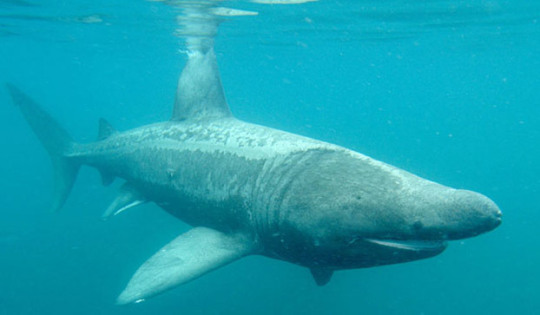
0 notes
Text
Week 18: Basking Shark

This is the Cetorhinus maximus, more commonly known as the Basking Shark. It is part of the Animalia kingdom, the Chordata phylum, the Chondrichthyes class, the Lamniformes order, the Cetorhinidae family, and the Cetorhinus genus.
Despite its name, the Basking Shark is actually a fish; the second largest fish in the world after the whale shark. As you can see, its mouth is wide open most of the time, and this is so it can catch plankton; don’t be fooled by its giant mouth, it has no interest in humans.
The basking shark is found in warm oceans and stays near the surface of the water. They can be found all over the world in warm waters. They are usually gray or brown and have very developed gill rakers. They have a generally passive lifestyle and can be found alone or in small schools.
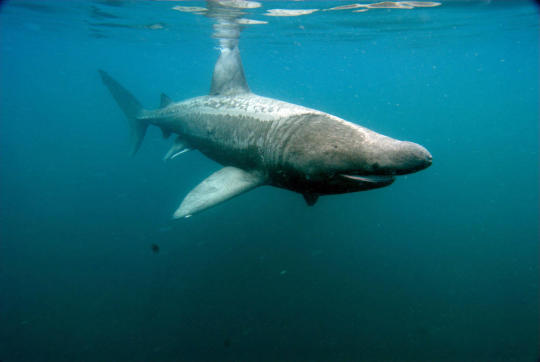
Basking sharks are known for their size and can grow up to 9 meters long and weigh an average of 3,700 kilograms. Their mouths can get up to 1.2 meters wide which makes filter feeding easier. They also have several small teeth.
They give birth to live young, but their place of birth is unknown, although some think that they surface to give birth.
Info sources: x x
Image sources: x x
52 notes
·
View notes
Text
Featured Species: Basking Shark (Cetorhinus maximus)
Featured Species: Basking Shark (Cetorhinus maximus)
This week’s featured species is one of the three filter species of sharks: the Basking Shark (Cetorhinus maximus). The sole member of the family Cetorhinidae, the basking shark is the second largest shark species; second only to another filter species, the whale shark (Rhincodon typus) (Skomal, 2016). These incredible animals are often seen from late spring through fall on both sides of the…
View On WordPress
#basking shark#breach#breaching#Caribbean#Cetorhinus maximus#elasmobranchii#elasmobranchs#filter feeder#gill raker#marine conservation#migration#ocean conservation#ovoviviparous#plankton#shark#sharks#transatlantic#zooplankton
0 notes
Text
Featured Species: Basking Shark (Cetorhinus maximus)
Featured Species: Basking Shark (Cetorhinus maximus)
This week’s featured species is one of the three filter species of sharks: the Basking Shark (Cetorhinus maximus). The sole member of the family Cetorhinidae, the basking shark is the second largest shark species; second only to another filter species, the whale shark (Rhincodon typus) (Skomal, 2016). These incredible animals are often seen from late spring through fall on both sides of the…
View On WordPress
#basking shark#breach#breaching#Caribbean#Cetorhinus maximus#elasmobranchii#elasmobranchs#filter feeder#gill raker#marine conservation#migration#ocean conservation#ovoviviparous#plankton#shark#sharks#transatlantic#zooplankton
0 notes
Video
@maestro320 "Megamouth" The full video had some misleading descriptions pertaining to this gentle giant as a monster. But in truth, the Megamouth Shark, is a filter feeder just like the whale shark, basking shark and most whales. The video however is from The Discovery Channel @discovery episode of Alien Sharks: The Megamouth from which I edited an excerpt for Instagram. The megamouth shark (Megachasma pelagios) is a species of deepwater shark. It is rarely seen by humans and is the smallest of the three extant planktivorous sharks, besides the whale shark and basking shark. Since its discovery in 1976, few megamouth sharks have been seen, with 61 specimens known to have been caught or sighted as of April 2015, including three recordings on film. Like the other two filter-feeders, it swims with its enormous mouth wide open, filtering water for plankton and jellyfish. It is distinctive for its large head with rubbery lips. It is so unlike any other type of shark that it is usually considered to be the sole extant species in the distinct family Megachasmidae, though suggestion has been made that it may belong in the family Cetorhinidae, of which the basking shark is currently the sole extant member. In addition to the living M. pelagios, however, two extinct megamouth species – the Priabonian M. alisonae and the Oligocene–Miocene M. applegatei – have also recently been proposed on the basis of fossilized tooth remains. However, the Cretaceous-aged M. comanchensis has been recently reclassified as an odontaspid shark in the genus Pseudomegachasma, and is in fact unrelated to the megamouth shark despite similar teeth morphology. The megamouth has a stout body and a long, wide bulbous head. Megamouths are large sharks, able to grow to 5.5 metres (18 ft) in length. Males mature by 4 m (13 ft) and females by 5 m (16 ft). Weights of up to 1,215 kg (2,679 lb) have been reported. #MegamouthShark #FilterFeeder #Conservation #Education #NotAMonster #EndSensationalism #EndangeredAnimals #NakaweProject #NakaweWarriors
#filterfeeder#endangeredanimals#conservation#notamonster#endsensationalism#education#nakawewarriors#nakaweproject#megamouthshark
0 notes
Text
List of Families within Lamniformes I’ve covered (each link leads to the tags for each family):
Cetorhinidae
7 notes
·
View notes
Photo
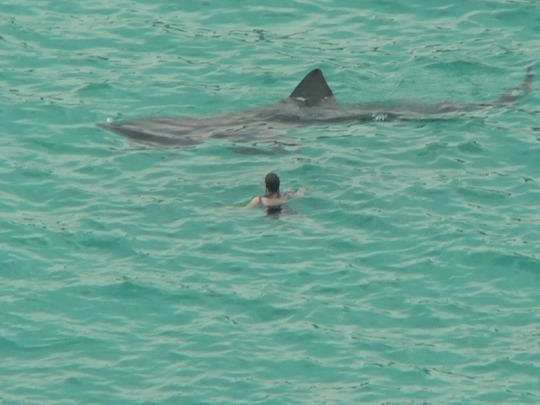
Reaching lengths of up to 40 feet (12 m), the basking shark is one of the largest species of fish. Like whale sharks and megamouth sharks, basking sharks are filter feeders and survive mostly on plankton. While they can be found feeding close to the surface, they are not aggressive and are harmless to humans.
Photo: the lady and the shark by candiche
5 notes
·
View notes
Photo
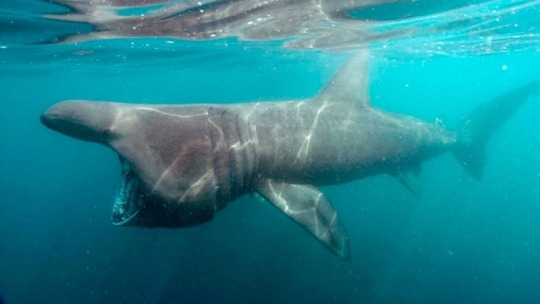
0 notes